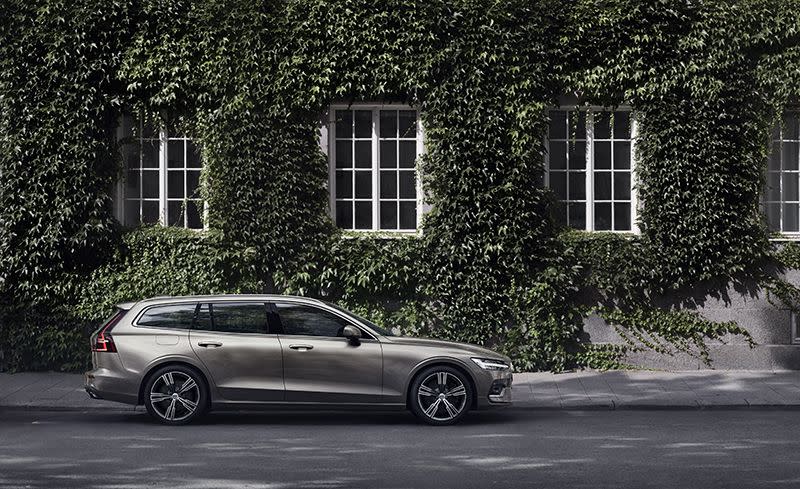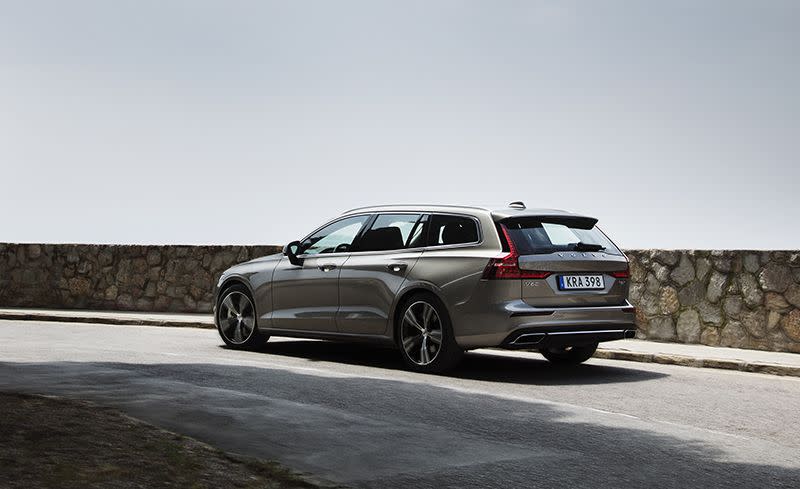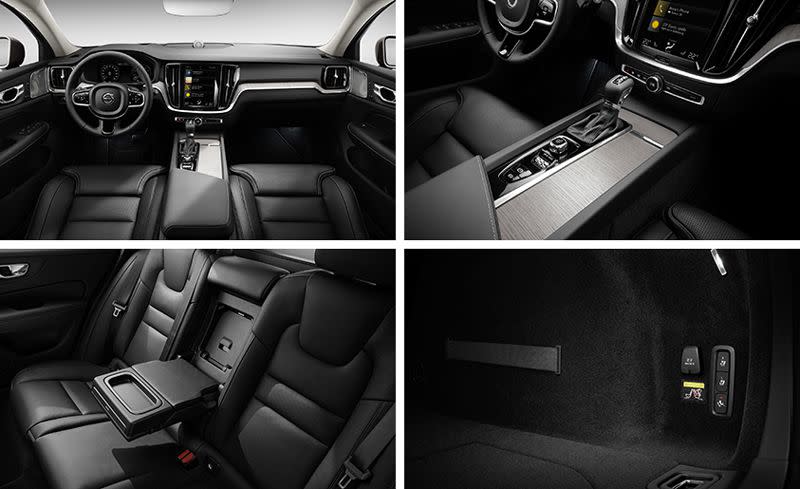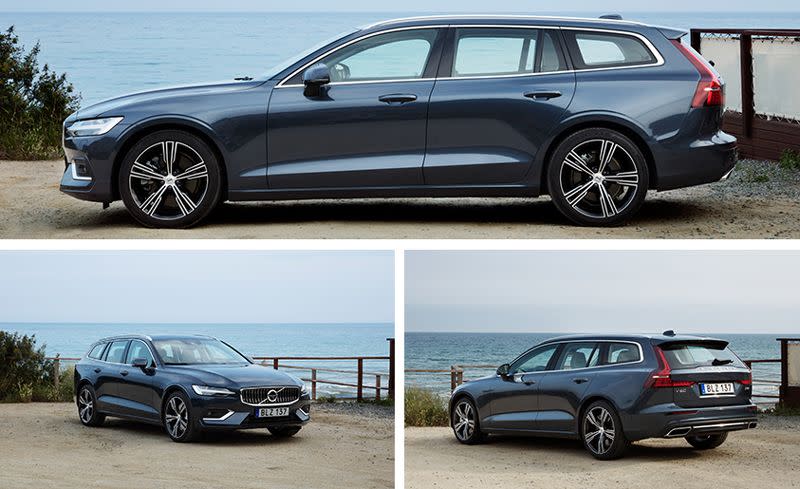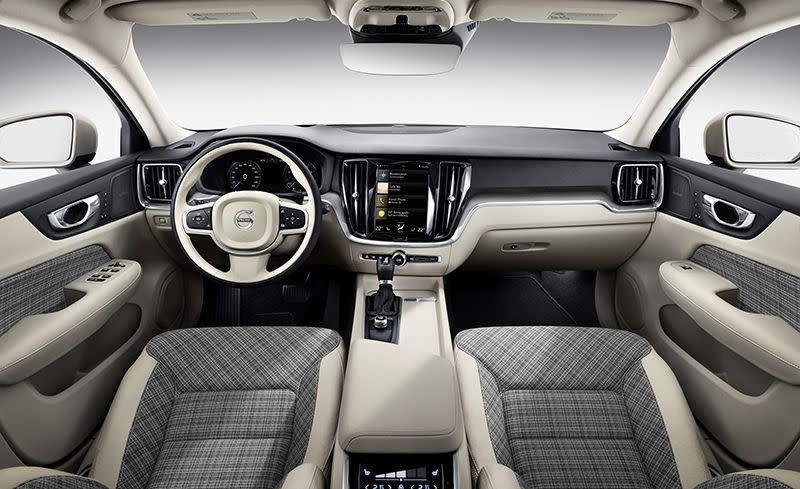2019 Volvo V60 Driven: Estate Planning

It seems like a curious choice for Volvo to lead off its new midrange series with the station-wagon variant. It could have first showed the more mainstream S60 sedan. Or picked the lifted-and-cladded V60 Cross Country, the model more clearly aligned with most consumers’ crossover-crazy tastes. But Volvo instead chose the traditional wagon, which as beautiful as it may be is unlikely to sell in any volume whatsoever, especially in the United States.
The larger V90 longroof is on pace to rack up sales of just over 300 units this year. No, that number is not missing a zero. The 2019 V60 undoubtedly will do better, not only because it will be less expensive, but also because dealers will be stocking them on their lots, unlike the V90, which is special-order only.
All in the Family
The V60 in many ways is a more affordable V90. Both cars share Volvo’s Scalable Product Architecture, which also underpins the XC60 and XC90 SUVs. The V60’s powertrain comes from its larger sibling as well, a transverse-mounted 2.0-liter four-cylinder mated to an eight-speed automatic. As in other Volvos, the T6 model is both supercharged and turbocharged to make 316 horsepower and 295 lb-ft of torque and is offered exclusively with all-wheel drive, while the T5 is merely turbocharged to the tune of 250 horses and 258 lb-ft. At launch, T5 models will be front-drive only, although Volvo representatives said an all-wheel-drive T5 could be offered at a later date. A T8 plug-in hybrid with a rear-mounted electric motor is planned as well.
Don’t hold your breath. The V60 doesn’t even go on sale in the U.S. until early 2019. While this gives you have plenty of time to save your kronor, it remains to be seen exactly how much you’ll need, as Volvo is being tight-lipped about pricing. The usual protocol-taking the current model V60 that starts at just $39,245 and adding a grand or two-may not apply here. The outgoing V60 comes from a different era and this new one is not only considerably larger but also an order of magnitude nicer.
Familiar Environs
Inside it has all the touchstones of the V90: The huge, tabletlike, 9.0-inch touchscreen that dominates the dashboard (upgraded here with 50 percent more processing power); the stitched-leather inserts and gorgeous wood trim with metallic accents; and the ignition switch in the center console between the seats with a knurled driving-mode selector beside it. Even the trademark yellow speaker cones of the optional Bowers & Wilkins audio system peer forth from similar perforated-metal grilles. While there are subtle differences between the cockpits of the two cars, they’re the sorts of things that you’d have to be a designer (or a Car and Driver fact-checker) to care about. For all intents and purposes, they are the same.
The rest of the V60, too, has a comfortable familiarity-quite literally. It is just as luxurious as the V90, with nice standard leather (even softer leather is an option), excellent seats, and a cabin that sounded to our uncalibrated ear quieter than that of the V90. The V60 may have a bit more plastic bits about. Perhaps. For sure it has a smaller luggage compartment, with the load floor measuring just 40.7 inches from the back of the second row to the tailgate, versus 45.4 in the V90. A rear hatch with more vertical glass helps maximize the actual volume of the V60’s cargo hold, giving it 23 cubic feet with the rear seats up against the V90’s 26.
The V60 is nearly seven inches shorter than the V90 overall, yet Volvo’s designers have given it a similarly sleek look by making the V60 ride closer to the ground and trimming its front overhang. Compared to the outgoing model, the new V60 is much larger yet less bloated; at 187.4 inches in length, it is 4.9 inches longer overall with a 3.8-inch-longer wheelbase, yet it sits 2.2 inches lower. A prominent character line through its rear fenders both helps differentiate the new V60 from the V90 and gives the car an athletic stance that was missing from the stubby old V60.
The Rain in Spain
Volvo chose the coast south of Barcelona for its drive event, where we discovered that the rain in Spain does not stay mainly in the plain. Torrential downpours during the first half of the drive proved but one thing about the V60: You do not need the Cross Country (which Volvo hinted would be coming, but not until after it introduces the new S60 later this month) to ford a street flooded with water that laps at the doorsills-deep enough, in fact, to set off the car’s parking sensors.
When the storm passed and the pavement dried, we were able to get a better sense of the V60’s dynamic attributes, which were a mixed bag. Like the V90, the V60’s chassis uses unequal-length control arms and coil springs in front and a multilink suspension with a single transverse leaf spring in the rear. The larger car’s four-corner air springs are not offered, although adaptive dampers will be. The T6 AWD with adaptive dampers had a firm ride, with excellent body control and a surprising amount of road feel through the wheel. At moderate speeds it seemed that the V60 offered the handling of a first-rate sports sedan, an impression that vanished just as quickly as the front tires’ grip when we really started to push it in corners. Steering response takes on a rubbery, artificial quality almost immediately after turn-in, and the car feels heavy while cornering.
Four-Banger Grit
Volvo lists the V60 T6 AWD’s curb weight at 4202 pounds, about 45 less than the last V90 T6 AWD we tested; a front-drive T5 should be about 200 pounds lighter. This should give the smaller wagon a slight performance advantage; Volvo says the T6 can hit 60 mph in 5.5 seconds, 0.3 second quicker than the V90. (Volvo’s claim for the T5 FWD is 6.4 seconds, also 0.3 second quicker than the equivalent V90.) We have seen inconsistent results with the T6 engine in our testing, and we’ve also found it to have a nonlinear power delivery. While driving in Spain, we noticed some of the same surging behavior during the transitions between supercharging at lower engine speeds and turbocharging at higher ones. Even though the V60 seems to have a better-insulated cabin than the V90, when driven in haste the sound of the highly taxed four-cylinder is unpleasant.
Good thing then that the rest of the V60 is exceedingly pleasant. No carmaker today is creating designs as visually interesting and downright pretty, both inside and out. The V60’s singular contribution to Volvo’s brimming design portfolio is its City Weave textile interior, a no-cost option that adds cloth inserts to the seats and doors that’s charming and upscale in the same way as are the Volkswagen GTI’s plaid seats. City Weave is less cheeky and looks more like couch upholstery, but it’s still a refreshing point of difference from all the leathers, fake leathers, and downright cheap polyester seat materials currently on the market. Other carmakers should take notice.
The feature list of the V60 is as long as would be expected of any luxury car, with items such as standard LED headlights, a panoramic sunroof, and an available head-up display. It is also as replete with safety features as any Volvo, with the City Safety automated emergency braking and steering system standard. Blind-spot monitoring is an option, as is Pilot Assist, Volvo’s semi-autonomous self-steering adaptive cruise control system that has been updated to better handle curves, both by slowing the car and dialing in more steering torque.
But of course, Volvo is no longer the only carmaker touting its safety pedigree. Even commodity cars from Honda and Subaru are now being marketed for their crashworthiness and standard active-safety features, forcing Volvo to nurture the design side of its organization. It has been decades now since Volvos resembled shipping containers. Indeed, style is Volvo’s greatest asset and contributor to its recent success. Which is why this curious company, one that understands its heritage as a purveyor of wagons and is dedicated to preserving such a legacy, has so elevated the V60.
You Might Also Like

 Yahoo Autos
Yahoo Autos 